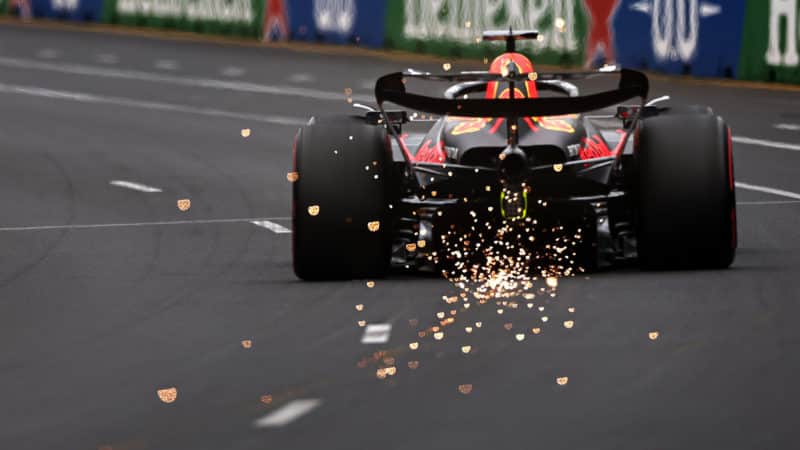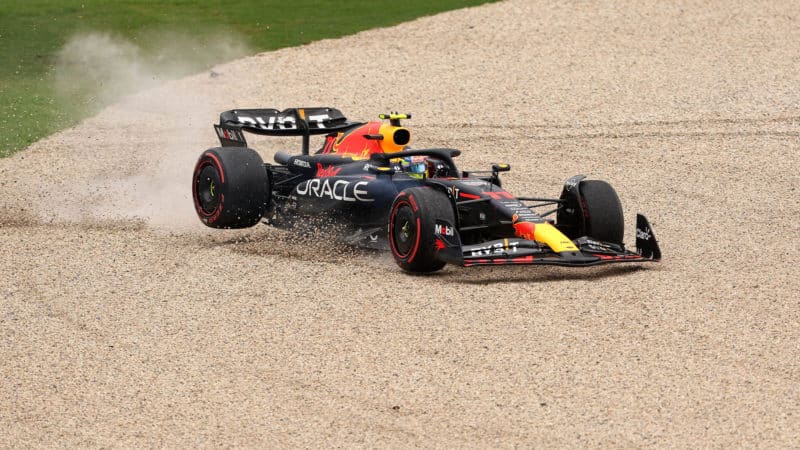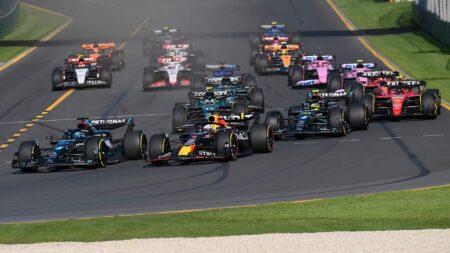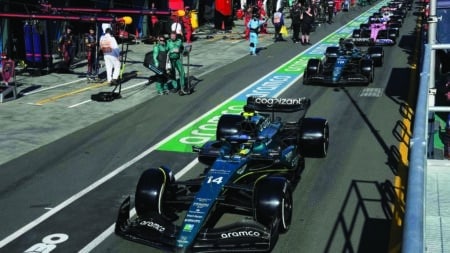Why is this significant? The generation of cars created by the aero regs introduced last year have a more rearward centre of pressure (the aero equivalent of the weight distribution) than the previous generation of cars. The throat of the diffuser of the venturi tunnels (where the air pressure is at its lowest and where therefore it is sucking the car to the ground at its hardest) is somewhere just behind the driver’s seat. With the previous flat-bottom generation of car, that point was at the leading edge of the floor – a long way further forwards. When a car dives under braking, its centre of pressure moves forward, partly because the front wing becomes closer to the ground and is therefore more effective. As the brakes are released and the car begins to level out, so the centre of pressure moves back to its original place. All cars (unless they have active suspension) do this.
In terms of balance, the new generation of F1 cars have the absolute worst of all worlds.
But with this generation of car, that centre of pressure is travelling a lot further forward under braking (because it’s located further back in the first place) and moving back that same big distance as it levels out. What this has tended to create are cars which lack rear stability under braking but which, as the car levels out as the brakes are released, then have a reluctance to turn in – ie the very opposite of what the driver would intuitively expect once he’s felt the rear instability under braking. Putting more lock on to get the turn in, the car eventually loads up and then pivots around the front wheels, giving mid-exit oversteer. In terms of balance, it’s the absolute worst of all worlds.
So if you can limit that centre of pressure from moving too much, there is a big advantage to be had. Putting a lot of anti-dive into the front suspension would reduce the movement of that centre of pressure. As would putting in a lot of anti-squat in the rear. Not only would that bring a big improvement in the consistency of the balance between the braking, entry and mid-corner phases, it would also allow you to run the car lower (as there will be less variation in pitch and dive). This will of course increase the underbody downforce, potentially exponentially. You’d see such a car sparking way more than the others down the straights (which the Red Bull does). You also see such a car gain a bigger advantage from DRS than the others (like the Red Bull does) as there’d be more downforce to dump.
But the problem with anti-dive geometry is that it makes it very easy to lock the front brakes, as the front tyres are not being loaded up as quickly. Has Red Bull found a way of alleviating the worst traits of that tendency, so as to make such extreme angles of anti-dive feasible? It would have to be a mechanical system for it to be legal. Does this require a bit of setting up circuit-to-circuit?

Sparks at Albert Park hint at lower ride set-up for Red Bull
Qian Jun/MB Media/Getty Images
Another trait of such extreme anti-dive would probably be a reluctance to bring its front tyres up to temperature as quickly as other cars, simply because it is not loading up the fronts as much under braking. That would make a car which would be much quicker in the race than in qualifying: average Red Bull pace advantage in qualifying so far this year: 0.172sec. Average Red Bull pace advantage in the races so far this year: 0.7sec.
A cool track on a smooth surface (like Albert Park) would really bring out these downsides. Did that combination simply catch Perez out?
That’s the most likely scenario. His car seemed fine in the race and no significant changes had been made to it.
But racing is more than just technology and driver ability. It’s also psychological. The backdrop to Perez’s weekend was him coming into it just one point behind team mate Max Verstappen after two races – and even that one point advantage might have been his rather than Max’s, had he been sharper in understanding the implications of the radio messages in Jeddah two weeks earlier regarding the fastest lap. It seems very clear that the car is so superior that no-one other than a Red Bull driver is going to be world champion. Ordinarily, that would mean Verstappen – for he is, without a shadow of doubt, a faster driver than Perez, and quite possibly anyone else besides.





